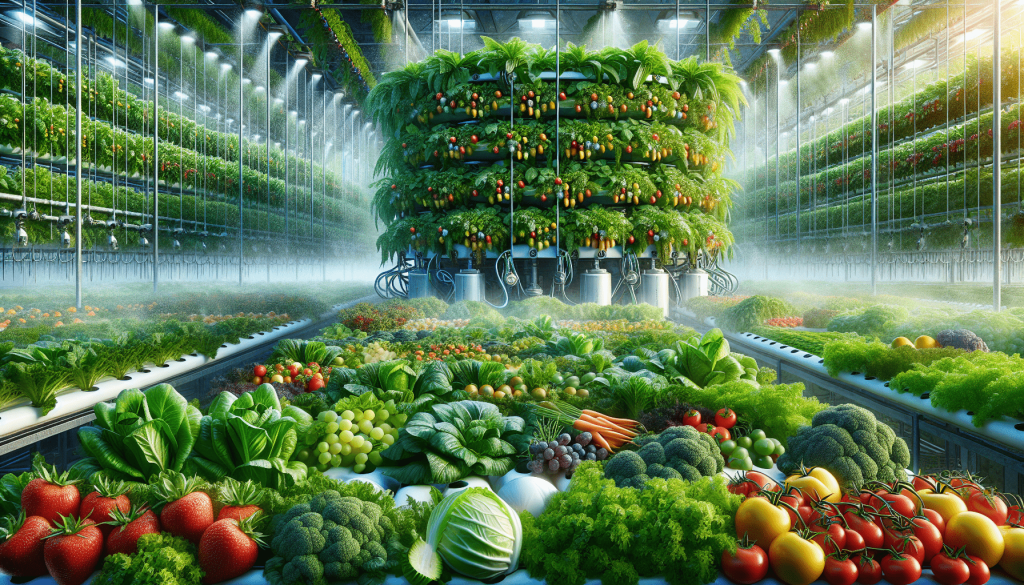
Maximizing Yield in Hydroponic Growing Systems
Are you looking to maximize your yield in hydroponic growing systems? Hydroponics offer a wealth of benefits, such as faster plant growth, increased produce yield, and reduced water usage. If you want to optimize your results and get the most out of your hydroponic setup, this article is for you.
Understanding the Basics of Hydroponics
So, you’re interested in maximizing your yield in hydroponic growing systems? Let’s start by understanding the basics of hydroponics. This method of growing plants involves nutrient-rich water solutions that directly supply essential nutrients to plant roots, eliminating the need for soil. By grasping these fundamental principles, you’re one step closer to maximizing your yield in hydroponics.
Hydroponic systems typically come in two main types: water culture systems, where the roots are submerged in water, and aggregate systems, where plants grow in a non-soil medium like perlite or gravel. Each system has its nuances, so understanding the type of hydroponic system you’re working with is key to optimizing your yield.
Choosing the Right Plants for Your Hydroponic System
When it comes to maximizing yield in hydroponic growing systems, choosing the right plants is crucial. Certain plants thrive in hydroponic environments and are more likely to yield abundant produce. Opt for leafy greens like lettuce, herbs such as basil, or fruiting plants like tomatoes and peppers for optimal results in your hydroponic setup.
Consider the growth requirements of each plant, such as light, nutrients, and spacing, to ensure they flourish in your hydroponic system. By selecting plants that are well-suited to hydroponics, you set yourself up for success in maximizing your yield.

Optimizing Light and Temperature Conditions
Light and temperature play a significant role in plant growth and yield. In hydroponic systems, providing the right amount of light and maintaining optimal temperature levels are essential for maximizing yield. Ensure your plants receive adequate light exposure, whether from natural sunlight or grow lights, and maintain consistent temperature ranges to promote healthy growth and bountiful harvests.
Keep an eye on temperature fluctuations, especially in indoor hydroponic setups, where artificial lighting may impact the ambient temperature. By optimizing light and temperature conditions, you create an ideal environment for your plants to thrive and yield plentiful produce.
Nutrient Management in Hydroponic Systems
Nutrient management is a critical aspect of maximizing yield in hydroponic growing systems. Unlike traditional soil gardening, where nutrients are present in the soil, hydroponic plants rely on nutrient solutions for their growth. Balancing essential nutrients like nitrogen, phosphorus, and potassium is key to promoting robust plant growth and high yields in hydroponic systems.
Regularly monitor nutrient levels and adjust your nutrient solution accordingly to ensure plants receive the necessary nutrients for optimal growth. Conduct frequent checks to prevent nutrient deficiencies or imbalances that could reduce yield potential. By mastering nutrient management, you pave the way for maximizing your harvest in hydroponics.

Monitoring and Adjusting pH Levels
pH levels play a crucial role in nutrient uptake by plants in hydroponic systems. Monitoring and adjusting pH levels is essential to maximize yield and prevent nutrient deficiencies. Most plants thrive in a slightly acidic to neutral pH range, typically between 5.5 to 6.5. By keeping pH levels within this optimal range, you ensure that plants can efficiently absorb nutrients and thrive in your hydroponic setup.
Invest in a reliable pH meter to regularly monitor the pH levels of your nutrient solution and make necessary adjustments using pH up or pH down solutions. Maintaining proper pH levels is fundamental to maximizing yield in hydroponic growing systems and promoting healthy plant growth.
Water Quality and Oxygenation
The quality of water used in your hydroponic system can significantly impact plant growth and yield. Ensure you use clean, well-oxygenated water to supply nutrients to your plants. Poor water quality can introduce contaminants or hinder nutrient uptake, leading to stunted growth and reduced yields in hydroponic crops.
Aerate your nutrient solution to increase oxygen levels, promoting healthy root development and nutrient absorption. Regularly check the water quality to prevent issues like algae growth, pathogens, or nutrient imbalances that could compromise plant health and yield potential. By maintaining high water quality and proper oxygenation, you support robust plant growth and maximize your harvest in hydroponics.

Choosing the Right Hydroponic System Setup
Selecting the right hydroponic system setup is essential for maximizing yield and optimizing plant growth. Different hydroponic systems offer unique advantages and are suitable for various plants and growing environments. Consider factors such as space availability, plant types, and your experience level when choosing the best hydroponic system for your needs.
Popular hydroponic systems include deep water culture (DWC), nutrient film technique (NFT), and drip systems, each with its advantages and requirements. Evaluate your specific growing goals and constraints to determine the most suitable hydroponic setup that aligns with your objectives. By selecting the right hydroponic system setup, you set the stage for maximizing yield and achieving success in hydroponic gardening.
Pruning and Training Techniques for Optimal Growth
Pruning and training techniques are valuable tools for maximizing yield and promoting healthy plant growth in hydroponic systems. Pruning involves removing unwanted or damaged plant parts, such as leaves or stems, to redirect energy towards fruit or flower production. Training techniques, like trellising or staking, help support plant structure and optimize light exposure for enhanced growth and yield.
Regularly inspect your plants for any signs of overcrowding, disease, or pest infestations, and promptly address any issues through pruning or training. By implementing these techniques, you improve airflow, light penetration, and nutrient distribution, creating an environment conducive to maximizing yield in your hydroponic growing systems.

Pest and Disease Management Strategies
Pests and diseases can pose significant challenges to maximizing yield in hydroponic growing systems. Preventive measures and early detection are key to protecting your plants from potential threats and ensuring a bountiful harvest. Implement integrated pest management (IPM) strategies, such as using beneficial insects, traps, or organic pesticides, to deter pests and maintain a healthy growing environment.
Regularly inspect your plants for any signs of pests or diseases, such as yellowing leaves, spots, or wilting, and take immediate action to address the issue. Quarantine affected plants if necessary to prevent the spread of pests or diseases to healthy crops. By proactively managing pests and diseases, you safeguard your plants and maximize yield potential in your hydroponic setup.
Harvesting and Crop Rotation Techniques
Harvesting your crops at the right time and implementing crop rotation strategies are essential for maximizing yield and sustaining long-term productivity in hydroponic systems. Harvest plants when they reach peak maturity to ensure optimal flavor, texture, and nutritional value. Regular harvesting also encourages continuous growth and fruiting, increasing overall yield in your hydroponic garden.
Implement crop rotation by alternating plant varieties or families to prevent nutrient depletion, disease buildup, and pest infestations in your hydroponic system. Rotate crops seasonally to maintain soil health and balance nutrient levels, promoting robust plant growth and high yields. By practicing proper harvesting and crop rotation techniques, you prolong the productivity of your hydroponic garden and maximize your yield potential.

Conclusion
Maximizing yield in hydroponic growing systems requires careful attention to various factors, from nutrient management and pH levels to light exposure and pest control. By understanding the basics of hydroponics, choosing the right plants, and optimizing growing conditions, you can enhance plant growth and yield in your hydroponic setup. Implementing pruning and training techniques, along with effective pest and disease management strategies, further supports optimal growth and harvest outcomes. Remember to harvest at peak maturity and rotate crops regularly to sustain long-term productivity in your hydroponic garden. With these tips and techniques, you can maximize your yield and enjoy a successful hydroponic gardening experience.




